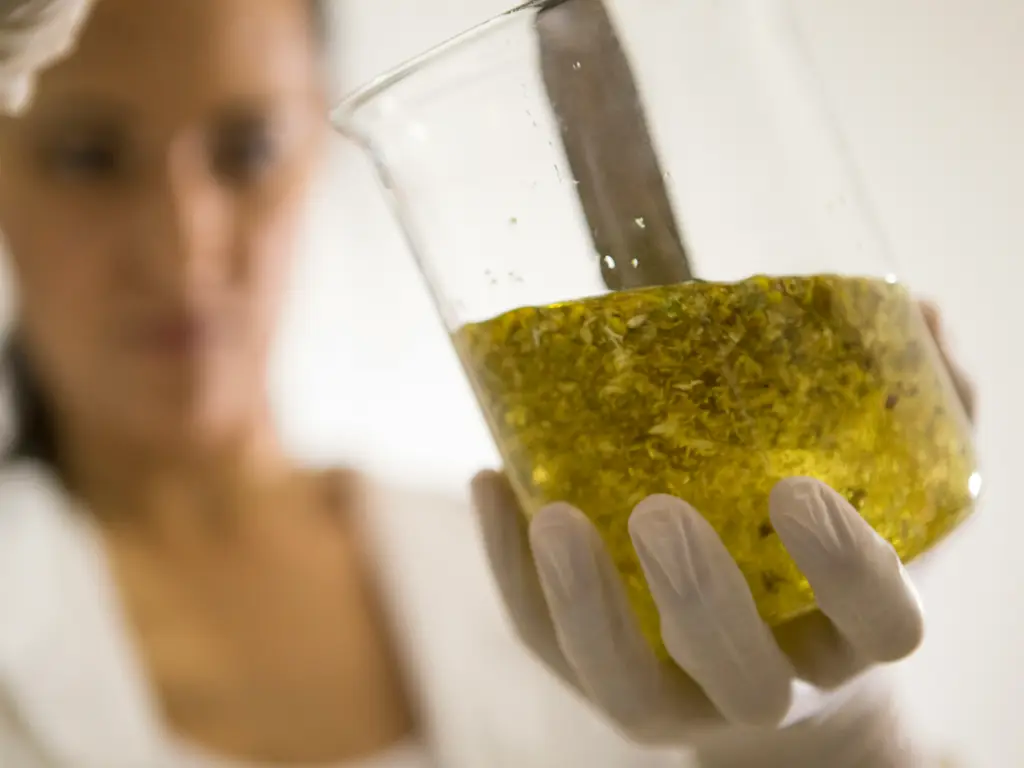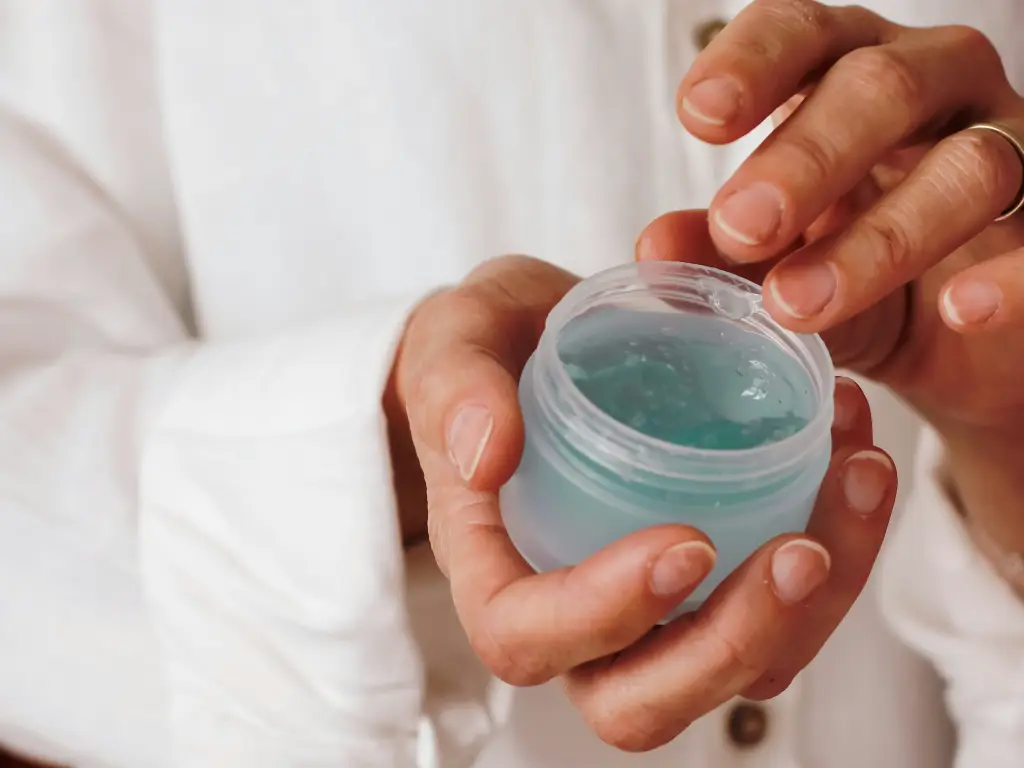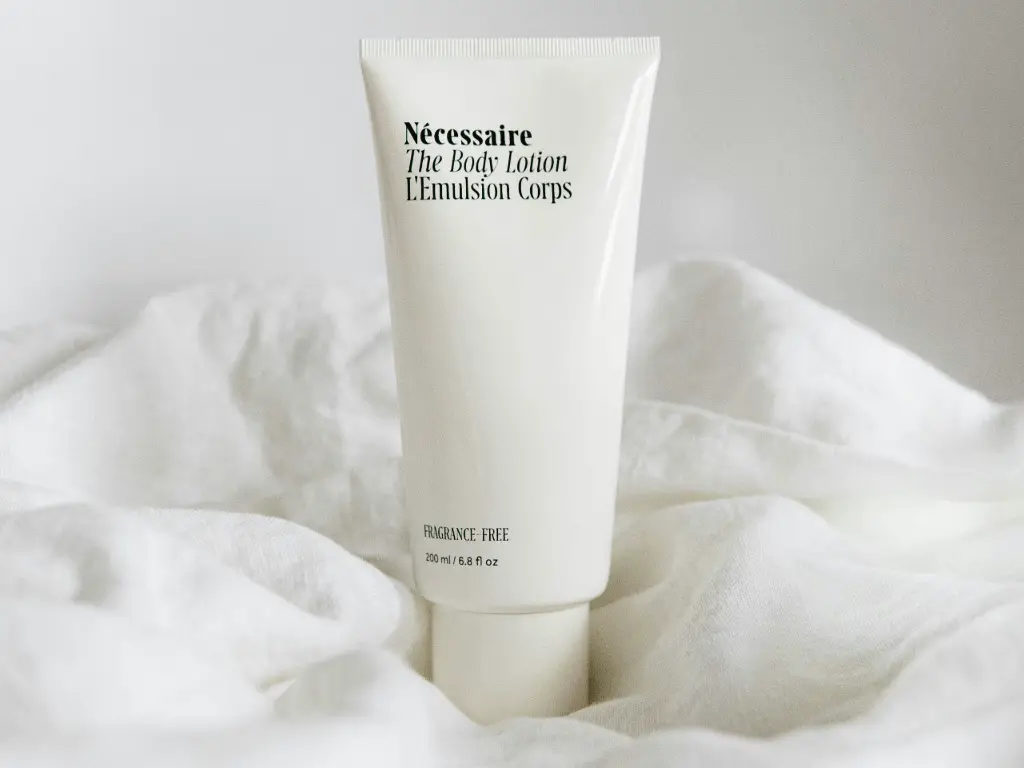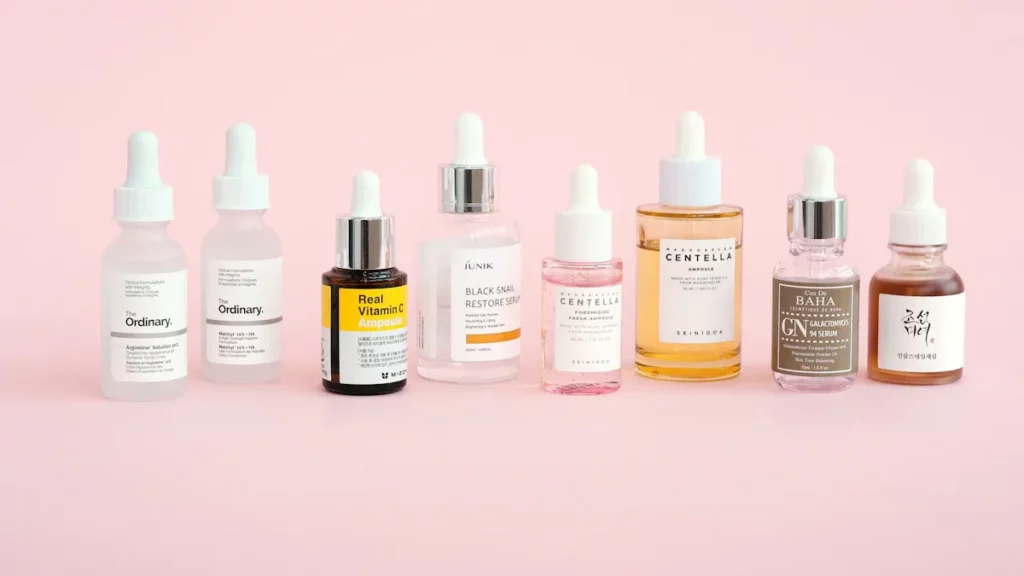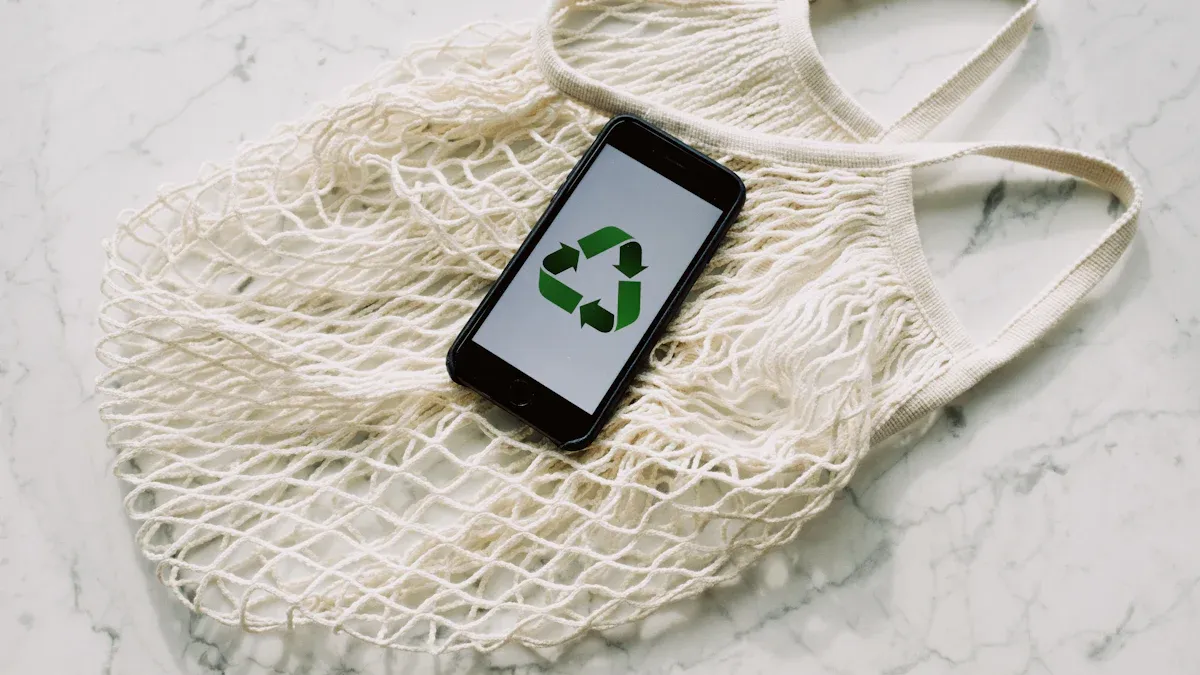
Sustainable packaging plays a vital role in reducing the strain on the environment. For instance, packaging waste made up 28.1% of the total municipal solid waste in the U.S. in 2018. As a result, the demand for eco-friendly solutions has surged. Today, 72% of consumers report buying more environmentally conscious products than they did five years ago, with 81% planning to increase such purchases in the future. Beauty brands that embrace sustainable practices not only meet these expectations but also gain a competitive edge in the rapidly growing sustainable beauty market, projected to reach USD 433.2 billion by 2034.
Types of Sustainable Packaging
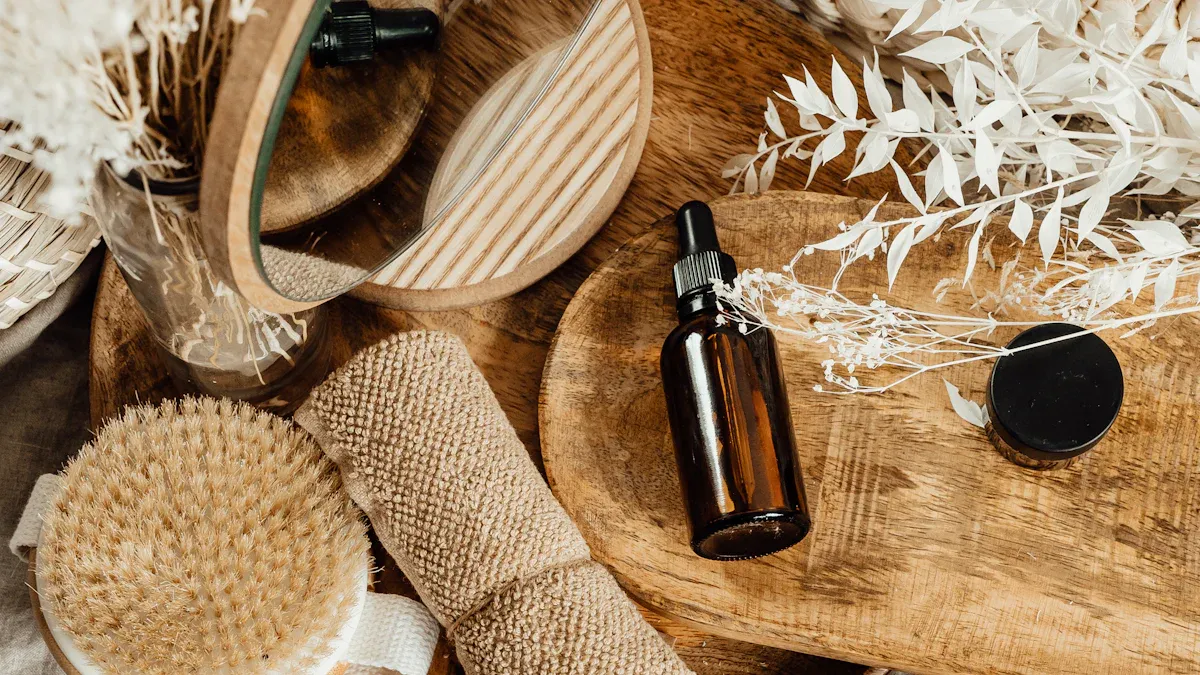
Biodegradable Materials
Biodegradable materials offer a sustainable alternative to traditional plastics. These materials break down naturally into harmless substances, reducing waste and environmental harm. You can find biodegradable packaging made from renewable resources like cornstarch, bamboo, and seaweed-based packaging. These options minimize reliance on fossil fuels and lower carbon emissions during production.
🌱 ヒント: Composting biodegradable packaging enriches soil health, improving water retention and conservation.
Recent studies highlight the benefits of biodegradable materials:
Benefit | Description |
|---|---|
Renewable Raw Materials | Derived from renewable resources, reducing dependence on fossil fuels. |
Waste Reduction | Breaks down faster than traditional plastics, reducing landfill use. |
Lower Carbon Emissions | Emits fewer greenhouse gases during production. |
Safety for Environment | Decomposes into benign substances, ensuring long-term environmental safety. |
Soil Health | Enhances soil quality through composting. |
Biodegradable materials also prevent microplastics from entering food chains, addressing a critical environmental concern. By choosing biodegradable packaging, you contribute to reducing plastic pollution and protecting wildlife.
Recyclable Materials
Recyclable materials play a vital role in sustainable packaging solutions. These materials can be processed and reused, reducing the need for raw material extraction and conserving natural resources. Common recyclable options include paper, glass, aluminum, and recyclable padded mailers.
♻️ Note: Recycling initiatives like San Francisco’s 80% recycling rate and Sweden’s over 99% recycling of household waste demonstrate the effectiveness of these systems.
Recycling also diverts waste from landfills, easing the burden on limited landfill space and reducing groundwater contamination risks. In 2018, recycling and composting saved over 193 million metric tons of carbon dioxide equivalent, showcasing its environmental benefits.
Consumers increasingly prefer recyclable packaging. A joint study by NIQ and McKinsey revealed that 92% of shoppers prioritize sustainability when choosing a brand. By adopting recyclable materials, you align with consumer preferences and contribute to a circular economy.
Reusable Packaging Systems
Reusable packaging systems offer a practical and eco-friendly alternative to single-use containers. These systems reduce waste and optimize resources, making them a sustainable choice for beauty brands. Examples include refillable containers, reusable materials like glass jars, and recyclable padded mailers designed for multiple uses.
💡 ヒント: Refillable packaging not only minimizes environmental waste but also enhances cost efficiency in production.
Several beauty brands have successfully implemented reusable packaging systems:
Bond No. 9: Introduced a refillable lipstick set with a luxurious keepsake case.
Kjaer Weiss: Designed refillable compacts that combine sustainability with elegance.
Consumers are increasingly drawn to reusable packaging. Research shows that 80% of US consumers prefer products without single-use plastic packaging, while 62% of UK shoppers prioritize reducing plastic waste. By offering reusable packaging systems, you meet these expectations and strengthen your brand’s eco-friendly image.
Popular Sustainable Packaging Solutions
Paper-Based Packaging
Paper-based packaging solutions have become one of the most popular options for sustainable packaging due to their versatility and eco-friendly nature. These solutions include paper bags, cardboard boxes, and molded pulp containers, which are widely used across industries. You can rely on paper-based packaging to reduce environmental impact because it is recyclable, biodegradable, and made from renewable resources.
A study by the European Environmental Bureau revealed that paper packaging consistently outperforms plastic in lifecycle assessments, showing lower environmental impacts in recycling potential and biodegradability. さらに, paper and paperboard accounted for 35.7% of global packaging demand in 2023, making them the most widely used materials.
Why Paper-Based Packaging Stands Out:
Recycling rate: Approximately 68.2% (EPA, 2020).
Increased usage: Food and beverage launches using paper-based packaging rose from 9% に 24% between 2015 そして 2018.
Renewable and biodegradable: Paper packaging breaks down naturally, reducing waste.
By choosing paper-based packaging solutions, you align with eco-friendly practices while meeting consumer expectations for sustainable packaging.
Biodegradable Bioplastics
Biodegradable bioplastics offer an innovative alternative to traditional plastics. These materials are designed to break down naturally, reducing waste and pollution. You can find biodegradable bioplastics made from renewable sources like cornstarch, sugarcane, and algae.
🌱 Note: While biodegradable bioplastics reduce aquatic toxicity, they may lead to higher greenhouse gas emissions during disposal in natural environments.
The environmental benefits of biodegradable bioplastics depend on their production and disposal pathways. Highly biodegradable microplastics exhibit lower aquatic ecotoxicity but result in higher greenhouse gas emissions. This highlights the importance of understanding the full lifecycle of these materials. By incorporating biodegradable bioplastics into your packaging strategy, you contribute to reducing plastic pollution while exploring innovative eco-friendly packaging solutions.
Eco-Friendly Boxes and Containers
Eco-friendly boxes and containers provide a practical and sustainable alternative to traditional plastic packaging. These solutions include paper to-go containers, molded fiber boxes, and reusable glass jars. You can reduce your carbon footprint by switching to these options, as they are made from renewable raw materials and manufactured using energy-efficient processes.
Environmental Benefits:
Lower greenhouse gas emissions during production.
Faster breakdown compared to plastic alternatives.
Reduced energy consumption in manufacturing.
Life cycle assessments show that producing paper containers results in fewer greenhouse gas emissions compared to plastic. By adopting eco-friendly boxes, you not only minimize waste but also enhance your brand’s commitment to sustainability.
Innovative Refillable Systems
Refillable systems are transforming the beauty industry by offering a sustainable alternative to single-use packaging. These systems allow you to reuse containers by purchasing refills, reducing waste and conserving resources. Many beauty brands now embrace refillable packaging to meet growing consumer demand for eco-friendly solutions.
♻️ Did you know? Purchasing a refill can save up to 70% CO2 emissions, 65% energy, そして 45% water use compared to buying a new product.
Refillable systems often use durable materials like glass and aluminum, which are recyclable and long-lasting. Brands such as Chanel, Fenty Beauty, and Kerastase have introduced refillable options for perfumes, foundations, そしてヘアケア製品. These solutions not only reduce environmental impact but also enhance the premium feel of the packaging.
Consumers increasingly expect brands to offer refillable options. Surveys reveal that 52% of UK shoppers consider sustainability a key factor when choosing products. しかし, 80% believe companies are not doing enough to provide refillable solutions. By adopting refillable systems, you can align with these expectations and build trust with eco-conscious customers.
Examples of Refillable Packaging in Action:
The Body Shop: Offers refill stations for shower gels and shampoos.
Cif and Smol: Provide refillable cleaning products to reduce plastic waste.
M&S: Introduced refillable beauty products in select stores.
Refillable systems also offer cost-saving benefits for both brands and consumers. By reusing containers, you minimize production costs and reduce the need for raw materials. This approach not only supports sustainability but also strengthens your brand’s commitment to innovation and environmental responsibility.
🌍 ヒント: Encourage your customers to participate in refill programs by offering incentives like discounts or loyalty points.
Packaging Innovations for Beauty Brands

Smart Packaging for Sustainability
Smart packaging is revolutionizing the beauty industry by combining technology with eco-friendly practices. You can use smart packaging to enhance consumer interaction while promoting sustainability. Technologies like QR codes, RFID tags, and NFC chips provide detailed product information, tutorials, and disposal instructions. These features empower consumers to make informed decisions about product usage and recycling.
How Smart Packaging Supports Sustainability:
QR codes and RFID tags educate consumers about the product lifecycle, from production to disposal.
NFC chips offer interactive experiences, encouraging responsible usage and waste management.
Beauty brands are increasingly adopting these innovations to align with consumer expectations. By integrating smart packaging, you can raise awareness about sustainable practices and strengthen your brand’s eco-friendly image.
Compostable Packaging Materials
Compostable packaging materials offer a practical solution for reducing waste and supporting environmental health. These materials break down into organic matter, enriching the soil and reducing reliance on fossil-based plastics. You can use compostable packaging made from plant-based materials like agricultural residues and bioplastics to create eco-friendly solutions.
Benefit/Statistic | Description |
|---|---|
Greenhouse Gas Emissions | Emissions from food waste in the U.S. equal those from 42 coal-fired plants. |
Access to Composting | Only 12% of U.S. households have municipal food waste collection systems. |
Certification Importance | BPI certification ensures compliance with industrial composting standards. |
Compostable packaging also enhances food organics recovery and soil regeneration. 例えば, Italy and South Australia reported lower contamination rates and higher-quality compost after integrating certified compostable packaging into their systems. By adopting compostable materials, you contribute to reducing waste and supporting sustainable agriculture.
Bio-Based and Renewable Materials
Bio-based and renewable material packaging is gaining traction among beauty brands due to its environmental benefits. These materials, derived from renewable resources like sugarcane, algae, and cornstarch, reduce dependence on fossil fuels and minimize carbon emissions. You can use bio-based packaging to create biodegradable and eco-friendly solutions that align with consumer preferences.
Company | Initiative Description | Year |
|---|---|---|
L’Oréal | Expanded “Eco-Design Packaging Lab” and introduced recyclable shampoo pouches. | 2025 |
Estée Lauder | Launched refillable fragrance stations; 56% of packaging is recyclable or reusable. | 2024 |
Glossier | Revamped packaging with reusable pouches and low-impact shipping kits. | 2024 |
These initiatives highlight the growing demand for renewable material packaging in the beauty industry. By incorporating bio-based materials into your packaging strategy, you can reduce environmental impact and meet consumer expectations for sustainable solutions.
Implementation Strategies for Sustainable Packaging
Integrating Sustainable Materials into Supply Chains
Integrating sustainable materials into your supply chain can significantly reduce environmental impact. By choosing materials like biodegradable plastics, recycled paper, or plant-based alternatives, you minimize waste and lower carbon emissions. This approach not only benefits the planet but also aligns your brand with eco-conscious consumer values.
例えば, Starbucks has committed to sourcing 100% of its coffee ethically through the Coffee and Farmer Equity (C.A.F.E.) Practices program. This initiative ensures environmentally friendly sourcing, enhancing Starbucks’ reputation and fostering customer loyalty. Similarly, adopting sustainable materials across your supply chain can strengthen your brand image and attract eco-conscious customers.
Sustainable supply chains also play a critical role in global decarbonization efforts. Businesses that adopt sustainable practices throughout their supply chains can significantly reduce their carbon footprint, contributing to long-term environmental goals. By integrating sustainable materials, you not only meet consumer expectations but also position your brand as a leader in sustainability.
Partnering with Ethical Suppliers
Partnering with ethical suppliers ensures that your packaging solutions align with sustainability goals. Ethical suppliers focus on reducing waste, using recycled content, and designing recyclable or compostable packaging. These partnerships help you create eco-friendly products while maintaining high-quality standards.
Here are some examples of how beauty brands have benefited from ethical supplier partnerships:
Sunday Riley: Switched to recycled pulp board for packaging, uses eco-friendly inks, and achieved plastic neutrality by partnering with CleanHub.
Prose: Adopted a made-to-order model to reduce waste, saving over 5 million sheets of paper and 2.3 million bottle pumps.
Initiative | Description |
|---|---|
Reduction | Focus on source reduction of material and elimination of unnecessary packaging components. |
Recycled Content | Maximizing post-consumer waste with 100% recycled materials. |
Recyclability | Designing packaging from recyclable mono-materials or easily separable materials. |
How2Recycle® Labeling | Assisting brands with clear recyclability labeling to meet sustainability guidelines. |
Research shows that brands adopting sustainable procurement practices can see an increase in brand value by 15-30%. さらに, EY’s Sustainability Report 2022 highlights that 25% of companies experienced rapid revenue growth due to sustainable practices. By partnering with ethical suppliers, you can achieve measurable success while contributing to a healthier environment.
Embracing Circular Economy Principles
Embracing circular economy principles helps you keep materials in use and minimize waste. This approach focuses on designing packaging for reuse, recycling, or composting, ensuring that resources remain in circulation for as long as possible. Circular economy strategies not only reduce environmental impact but also create cost-saving opportunities for your brand.
To implement these principles, consider the following strategies:
Automate packaging processes to enhance efficiency and reduce labor costs.
Optimize packaging for logistics to maximize storage and reduce transportation costs.
Promote circular economy principles by designing packaging for easy repair, reuse, and recycling.
Brands like Each & Every have successfully adopted circular economy practices. By switching to sugarcane packaging and compostable envelopes, they reduced their carbon footprint while meeting consumer demand for sustainable solutions. Similarly, e.l.f. Beauty eliminated 650,000 pounds of secondary packaging by removing unnecessary materials, benefiting both the company and its customers.
Big data analytics and AI-powered design can further optimize resource usage, reducing material waste by up to 12% and material usage in product development by up to 20%. IoT-enabled systems can also increase recycling rates by 25%. By leveraging these technologies, you can enhance your packaging strategy and contribute to a more sustainable future.
Educating Consumers on Sustainable Practices
Educating your customers about sustainable practices can significantly influence their purchasing decisions. When consumers understand the environmental impact of their choices, they are more likely to support eco-friendly brands. By providing clear and accessible information, you empower them to make informed decisions that align with their values.
One effective way to educate consumers is through transparent labeling. Studies reveal that 84% of consumers prefer a standardized system of regulatory labeling. Clear labels help them identify sustainable packaging and products, making it easier to choose eco-friendly options. 例えば, including information about recyclability or compostability on your packaging can guide customers toward proper disposal methods.
You can also use digital tools to enhance consumer education. QR codes on packaging can link to videos or articles explaining the benefits of sustainable solutions. These tools not only educate but also engage your audience, creating a stronger connection with your brand. Research shows that sustainability scores influence buying behaviors similarly to customer ratings, emphasizing the importance of informed choices.
Another strategy involves sharing sustainability tips through your marketing channels. Social media posts, newsletters, and blog articles can highlight simple actions like reusing containers or participating in recycling programs. Providing accurate information encourages consumers to adopt sustainable habits, reinforcing their commitment to eco-friendly practices.
💡 ヒント: Host workshops or webinars to educate your audience about sustainability. Interactive sessions can build trust and loyalty while showcasing your brand’s dedication to environmental responsibility.
Leveraging Expertise from Industry Leaders like Oully
Collaborating with industry leaders like Oully can elevate your sustainable packaging strategy. With over a decade of experience in beauty and personal care manufacturing, Oully offers innovative solutions tailored to your brand’s needs. Their expertise in eco-friendly packaging design and sustainable practices ensures that your products align with consumer expectations.
Oully operates a state-of-the-art facility certified by FDA, ISO, およびCGMP標準. This guarantees high-quality packaging solutions that meet rigorous environmental and safety requirements. By partnering with Oully, you gain access to customizable options, including biodegradable materials, recyclable containers, and refillable systems. These solutions not only reduce your environmental footprint but also enhance your brand’s reputation.
One of Oully’s standout features is its commitment to innovation. Their team stays ahead of industry trends, offering cutting-edge packaging designs that combine functionality with sustainability. For instance, they can help you integrate bio-based materials or smart packaging technologies into your product line. These advancements appeal to eco-conscious consumers and set your brand apart in a competitive market.
🌍 Did you know? Oully provides flexible low MOQ options and a fast 46-day production turnaround, making it easier for brands of all sizes to adopt sustainable packaging.
By leveraging Oully’s expertise, you can streamline your packaging process and focus on delivering high-quality, eco-friendly products. Their end-to-end support, from custom formulation to dropshipping services, ensures a seamless experience for your brand and customers alike.
Sustainable packaging is no longer optional for beauty brands. It plays a critical role in reducing waste and protecting the environment. By adopting eco-friendly solutions, you can meet consumer expectations while contributing to a healthier planet. For instance:
A global beauty company reduced packaging by 20%, cutting greenhouse gas emissions by over 40% by 2030.
Half of the plastic used in their packaging is now recycled, showcasing a commitment to sustainability.
Despite these advancements, only 7% of companies succeed in their sustainability efforts. This highlights the need for more brands to take action. By embracing sustainable practices, you can drive industry progress and build trust with eco-conscious consumers. Start today and make a lasting impact on the environment.
FAQ
What is sustainable packaging?
Sustainable packaging uses materials and designs that minimize environmental impact. It focuses on reducing waste, using renewable resources, and promoting recyclability or reusability. This approach helps protect the planet while meeting consumer demand for eco-friendly products.
How can beauty brands benefit from sustainable packaging?
Beauty brands can attract eco-conscious consumers, reduce production costs, and enhance their reputation. Sustainable packaging also aligns with global environmental goals, helping brands stay competitive in a rapidly evolving market.
Are biodegradable materials better than recyclable ones?
Biodegradable materials break down naturally, while recyclable materials can be reused multiple times. The best choice depends on your brand’s goals and the availability of recycling or composting facilities in your target market.
What are refillable packaging systems?
Refillable packaging systems allow customers to reuse containers by purchasing product refills. This reduces waste, conserves resources, and often lowers costs for both brands and consumers.
How can I educate customers about sustainable packaging?
Use clear labels, QR codes, and social media to share information about your packaging’s eco-friendly features. Hosting workshops or sharing tips online can also encourage customers to adopt sustainable practices.

